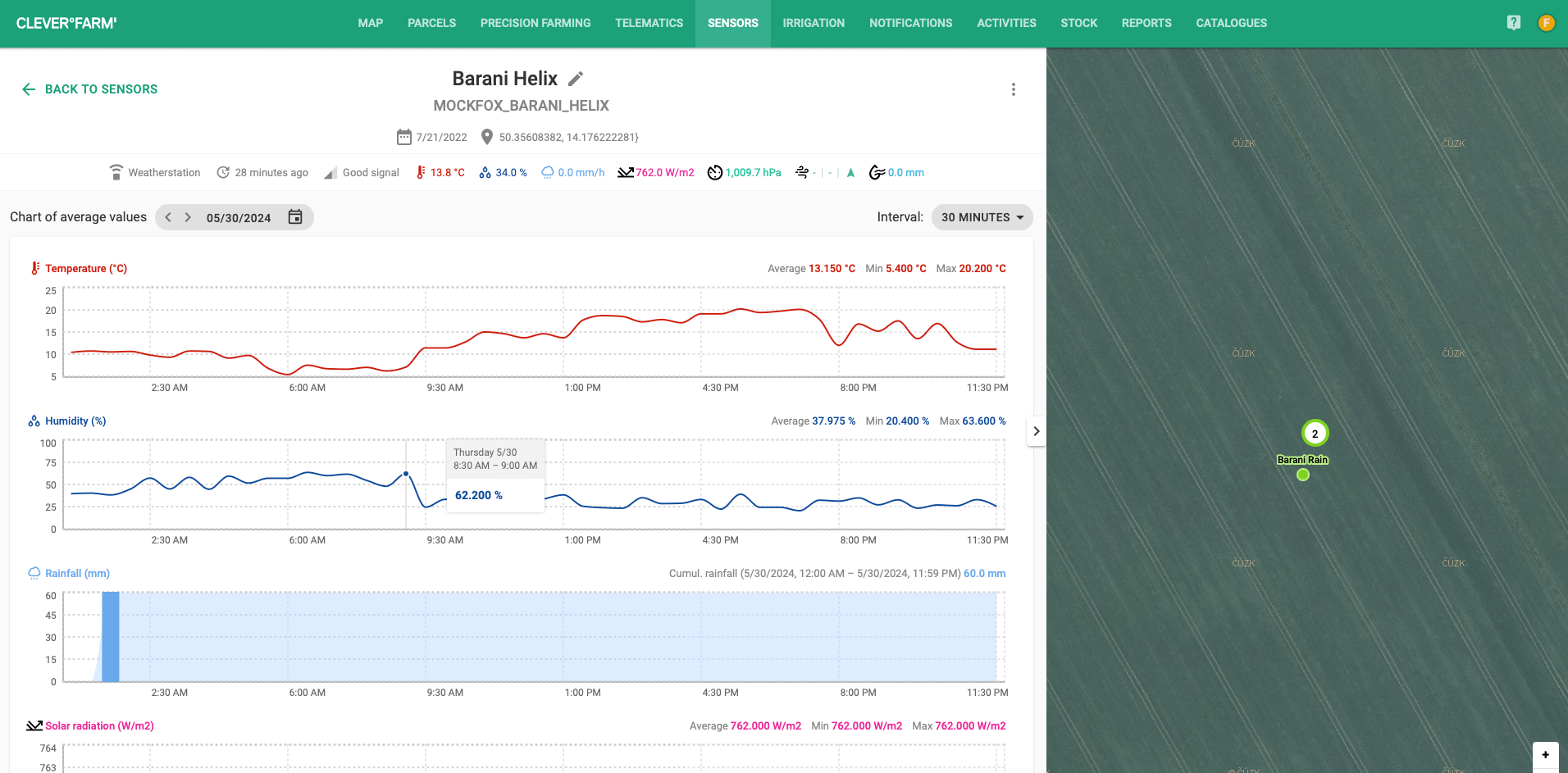Spray application according to humidity
Each farmer monitors the weather to decide when to fertilise or apply sprays effectively. The optimum weather conditions for sprayers without anti-entrainment components are:
- air temperature up to 25 °C and
- relative humidity greater than 60%.
The reason why the farmer should monitor the air humidity is that at lower humidity levels (less than 60%), a lot of evaporation occurs when applying products and damage to the plant can occur.
It is also very important to distinguish the seasons, this plays an equally important role in deciding when to send a sprayer into the field. In spring and autumn, when the humidity is above 60%, the farmer does not need to take a detailed interest in measuring the air humidity. Values above 60% are sufficient to carry out spraying (the value of 60% is taken as a cut-off value, so the higher the value the better). Making spraying decisions based on humidity is particularly important in late spring/summer and summer itself. For example, with fungicide and herbicide applications during these periods, there is an ideal opportunity to put a new spray system into practice.

Fig. 1: Optimal conditions for spray application occurred after 20 h.
Given the trend in humidity values, it is necessary to focus on spraying stands in the early evening when temperatures have dropped sufficiently and continue into the night hours. It is not uncommon, especially on larger farms, to start the night shift from e.g. 6pm to 3am, or follow up with a second shift from 3am to about 9am, with the end of the shift determined by the humidity dropping below the 60% threshold.
